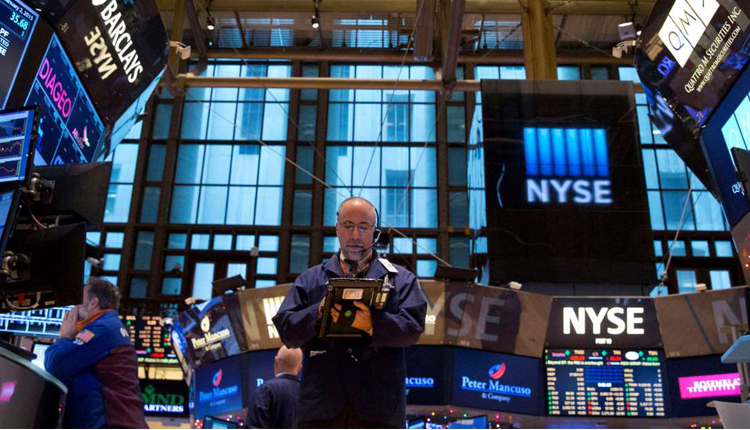U.S. stocks fell on Friday after the release of mixed employment data jolted interest rates higher. The S&P 500 closed 0.6 percent lower at 2,885.57 as the tech sector under performed. The broad index also fell nearly 1 percent this week, posting its worst weekly performance since the week of September 7.
The Dow Jones Industrial Average dropped 180.43 points to 26,447.05 as Intel and Caterpillar lagged. It also notched its second straight weekly decline.
The Nasdaq Composite pulled back 1.2 percent to 7,788.45 as Amazon, Apple, Netflix and Alphabet all traded lower. For the week, the tech-heavy index fell 3.2 percent, its biggest weekly drop since the week of March 23. It dropped 6.5 percent that week.
At its lows of the day, the Dow fell as much as 325.67 points. The S&P 500 broke below its 50-day moving average for the first time since July 5 before snapping back above the closely watched technical level. The Nasdaq fell as much as 2.1 percent on Friday.
The U.S. economy added 134,000 jobs in September, well below the expected gain of 185,000. However, the U.S. unemployment rate fell to its lowest level since 1969. Job gains for August also received a sharp upward revision to an addition of 270,000 jobs from 201,000. Wages, meanwhile, grew by 2.8 percent last month on a year-over-year basis to match expectations.
“The labor market is going to keep getting tighter and that will mean higher wages,” said Peter Cardillo, chief market economist at Spartan Capital Securities. “This is going to keep upward pressure on rates and continue to put downward pressure on stocks.”
The 10-year note yield rose to 3.24 percent and hit a fresh 2011 high while the two-year note yield advanced to 2.897 percent.
The Cboe Volatility Index (VIX), widely considered the best fear gauge in the market, hit a high of 17.36, its highest level since July 2.
The rise in yields pushed home-builder stocks lower. The SPDR S&P Homebuilders ETF (XHB) fell 0.8 percent and notched a 13-day losing streak. Emerging markets also fell as the iShares MSCI Emerging Markets ETF (EEM) slipped 0.4 percent. Emerging markets also fell 4.89 percent, their worst weekly performance since February.
Yields have been on the rise this week amid strong economic data. The U.S. services sector grew at its fastest rate on record last month, according to data released by the Institute for Supply Management.
Comments from Federal Reserve Chair Jerome Powell also pushed yields higher. Powell on Wednesday said that the Fed had a long way to go before interest rates would hit neutral, suggesting to markets that more hikes could be coming.
“There is clear reason why this is happening,” said Paula Solanes, senior portfolio manager at SVB Asset Management. “All of this goes very well with what the Fed is doing and what Fed Chair Powell said this week.”
Bank stocks briefly traded higher before falling with the rest of the market. J.P. Morgan Chase and Bank of America both fell around 1 percent, while Citigroup slipped more than half a percent. Banks typically benefit from higher rates as they make loans more profitable.
JJ Kinahan, chief market strategist at TD Ameritrade, said investors are hesitant to buy into financials just yet because they’ve been “burned so many times in the past.” He added financials are entering a “show me” period as rates rise.
Other economic data released Friday include the U.S. trade deficit, which widened to $53.2 billion in August even amid an ongoing trade spat between the States and some of its key trade partners. Over the past 12 months, the deficit is up $31 billion or 8.6 percent.
Friday’s decline came a day after the Dow posted its worst day since Aug. 10. The S&P 500 and Nasdaq also fell sharply in Thursday’s session.
“The S&P 500 is topping out as policy normalizes. The Fed is already tighter than they realise,” said Barry Bannister, head of institutional equity strategy at Stifel, in a note to clients. “As the dollar rises further and EPS estimates are cut the market will drop faster than the Fed can (or wishes to) react.”
He added investors should move toward more defensive sectors like consumer staples, health care and utilities.
Source: CNBC


